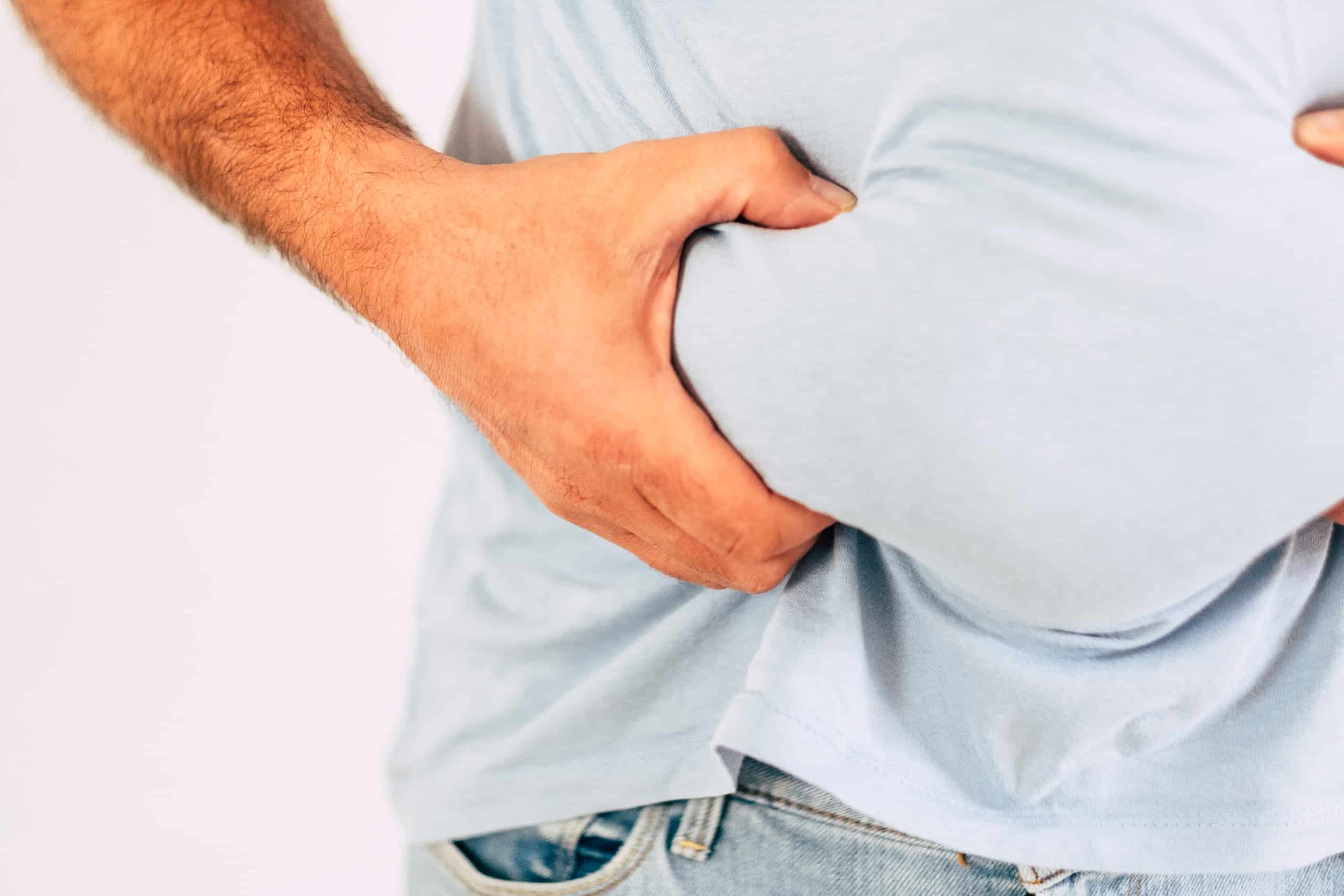Introduction
Back pain is widespread across the US. It can be anything from a minor issue to severe, chronic pain. It affects people of all ages and genders. Your weight can make a difference in how much back pain you have. Being overweight or obese can worsen existing issues and create new ones. So, it’s important to understand the link between weight and back pain.
This guide will explain how your BMI affects your back health. It’ll also provide tips on how to reduce your risk of developing back pain from being overweight. There are several causes of back pain, so understanding how BMI affects your risk can be a great starting point.
The Link Between Weight and Back Pain
Overweight or obese? These can bring back pain and discomfort. Too much body weight adds pressure to the back, resulting in pain and discomfiture. Certain daily activities and habits could also be the cause of back pain and distress.
This piece examines the reasons for back pain from weight and how to manage it:
Extra Weight Puts Extra Pressure on Your Spine
If you are overweight or obese, your extra weight puts strain on your spine. This can lead to back pain due to increased strain on the lower back muscles, disks, ligaments, nerves, and joints. Plus, it decreases your ability to maintain good posture.
The more weight you carry, the more pressure on your spine. It also affects abdominal muscles, as well as organs like your kidneys. This makes it harder to balance your upper torso, and can lead to poor posture and spinal pain.
Being overweight causes inflammation throughout the body, worsening joint pain and making everyday activities harder. It is important to consider losing some weight if better spinal health and overall health is a goal. This can reduce pressure on the entire skeletal structure, including the discs between each vertebrae. Losing weight may seem daunting, but it can help.
Poor Posture and Excess Weight
Poor posture, like leaning forward or hunching, reduces the support your spine gets. This can cause back pain. Extra weight also puts more strain on the spinal column. This decreases its flexibility and adds to discomfort.
If you are overweight or obese, it is wise to practice good posture when sitting or standing. This can help maintain a healthy weight and reduce pressure on your back.
Abdominal fat and tight muscles can affect posture when standing or sitting for long periods. People who slouch can also be affected. Working with a physical therapist or chiropractor as part of an overall health plan may help reduce symptoms related to posture-related back pain caused by extra weight. An individual strengthening program may help reduce tension built up in the soft tissues around the spine, such as muscles, tendons and ligaments. This can provide more spinal support during movement and rest.
Weight and Back Pain: A Vicious Cycle
The weight-back pain cycle is vicious. Being overweight or obese can lead to muscle pain, immobility, and posture issues. This pain can make it difficult to exercise or do activities that may help you reach a healthy weight. Pain can stop you from working out or taking long walks – both good for losing extra pounds causing the backache. Some medical conditions like diabetes, heart disease, and inflammation, caused by excess bodyweight, can lead to chronic back problems.
Good news! Shedding extra pounds through diet and exercise can reduce back pain. Yoga or water-based exercises don’t require too much exertion on the spine. Working with a trainer can help kickstart a healthy lifestyle. Walking, jogging, or cycling can help lower inflammation levels. Working with a physician determines the best treatment plan – both connected to this cycle of discomfort.
Strategies for Managing Back Pain
Back pain is a common issue. If you are over- or underweight, it can be even worse. Carrying too much weight causes unnatural curves that strain back muscles. Being too light can also cause pain, since there is not enough cushioning.
Let’s look at strategies for dealing with this:
Regular Exercise
Exercising regularly is a must for managing and reducing back pain. It strengthens muscles, increases flexibility and range of motion, helps with posture and core stability, and even improves circulation, mood, energy and reduces stress. Still, many people suffering from back pain find it hard to start or stay consistent with it due to the discomfort.
Thus, it’s important to find activities that fit your fitness level. Start with low-impact exercises such as walking or light swimming. Don’t go for activities that make you feel more pain or discomfort in your back (e.g. running). Begin slowly and do not increase intensity too fast. Take your time to adjust. Yoga can also be beneficial; some poses can improve posture, reduce spasms and boost flexibility.
Always ask your doctor before starting physical activity if you’re experiencing chronic or recurrent back pain. This will ensure that your program meets your individual needs, considering any health issues such as injuries or age-related problems, making sure the exercise is safe for you.
Healthy Eating Habits
Healthy eating is important for health and wellness. It can also influence back pain. Eating fruits, veggies, lean proteins and healthy fats like olive oil helps keep a healthy weight. A diet low in sugar, salt and saturated fat helps reduce back pain. Obesity can cause chronic spinal issues.
Certain foods provide anti-inflammatory properties to manage pain without medication. These include dark leafy greens, blueberries, fatty fish, walnuts, and avocados. Eating these regularly offers long-term benefits.
By avoiding harmful refined carbs, you may be able to prevent some back pain. Proper nutrition helps ease back pain discomfort. Invest in your overall health for back pain relief.
Proper Posture and Body Mechanics
Back pain can come from many things. Such as bad posture, body mechanics, muscle strain, and a difference between left and right. Lifting wrong, and being overweight can also cause pain.
To stop this, it’s important to use good body mechanics when sitting, standing, or lifting.
- Good posture is key. When standing or walking, keep your head over your middle, and shoulders relaxed and squared. Don’t arch your lower back, or hunch forward while sitting or standing. Lift correctly, bending your knees. Keep objects close to your body and balanced.
- Muscle imbalances can lead to sciatica. Pain in either leg, radiating to toes or feet. Weakness or numbness can be a sign. Our physical therapists think it’s very important to address these before they become worse. If you think something’s wrong, don’t wait – get help!
Conclusion
In short, weight and back pain are connected. The more body mass index (BMI) you have, the more likely you’ll experience back pain. There are many different ways to manage or lessen back pain, such as exercise, medications, physical therapy, and surgery. Which one is best for you depends on your general health and obesity level.
If you have extra weight, physical activity and healthy eating can help. You may need to look into weight loss methods or get professional help if that’s not possible. Remember that extra pounds can affect your spine health and overall well-being, so you can make the best decisions for you.
Frequently Asked Questions
Q: How does excess weight contribute to back pain?
A: Excess weight places extra strain on the spine and muscles in the back, leading to pain and discomfort. It can also worsen existing back conditions, such as disc herniation or spinal stenosis.
Q: Can losing weight help alleviate back pain?
A: Yes, losing weight can help reduce the strain on the spine and alleviate back pain. It can also improve overall health and prevent future back problems.
Q: What types of exercises can help with weight loss and back pain?
A: Low-impact exercises such as yoga, swimming, and walking can help with weight loss and relieve back pain. Strengthening exercises and core exercises can also improve back support and reduce pain.
Q: How does posture affect back pain?
A: Poor posture can contribute to back pain, especially when sitting or standing for long periods. Maintaining good posture can reduce strain on the spine and alleviate pain.
Q: Can a specialized diet help with weight loss and back pain?
A: A balanced, healthy diet can help contribute to weight loss and improve overall health, which in turn can reduce back pain. Additionally, certain anti-inflammatory foods can help alleviate back pain.
Q: When should I seek medical treatment for back pain?
A: You should seek medical treatment if your back pain is severe or chronic, if it is accompanied by other symptoms such as numbness or weakness, or if it limits your daily activities. A medical professional can help determine the cause of your back pain and recommend appropriate treatment.









